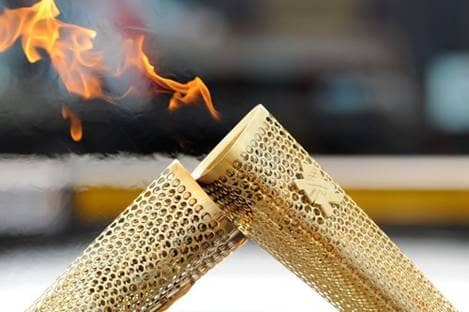
When you think of the Olympics, what’s the first image that comes to mind? Most likely it is the brave flame that stands behind the athletes and represents the strength and fortitude that lies within every Olympics game.
The torch is ignited several months before the opening ceremony at the site of the ancient Olympics in Olympia, Greece. In 1928, the tradition was introduced to the games. An employee of the electric utility of Amsterdam lit the first Olympic flame in the Marathon Tower of the Olympic Stadium in Amsterdam. Over the years famous and former athletes with significant achievements and milestones have had the honor of being the last runner in the torch relay. The list includes Paavo Nurmi, Muhammad Ali, Cathy Freeman, Wayne Gretzky and several other historical figures.
The torch has traveled to the ends of the world and has a story to tell. Making all the leaps and bounds imaginable, the torch has created a historical timeline that is anything short of miraculous. In 1948 and 2012 the torch traveled by boat across the English Channel and again through water again in 2008 by rowers in Canberra, as well as by dragon boat in Hong Kong.
Then in 1952, the torch left ground and water and traveled by airplane to Helsinki. Then back on the ground, or at least somewhat near the ground, via horseback to Stockholm in 1956. In 1976, for the first time in history the torch traveled through a radio signal. From Athens the signal was transmitted by satellite to Canada where it was received and used to trigger a laser beam to relight the flame.
You would think that water would be an obstacle but in 2000 the torch defeated the odds as it was carried under water by divers near the Great Barrier Reef. Then in 2004, the torch made history once more by participating in the first global torch relay. The journey lasted 78 days and covered a distance of more than 78,000 kilometers – equating to roughly 48,467 miles. Traveling to Africa and South America for the first time, visiting all of the previous Olympic cities and finally returning to Athens for the Olympics – the torch was passed between 11,300 torch bearers.
As if flying and swimming isn’t enough, in 1996, 2000 and 2013 the torch traveled to space, minus the flame, yet again making history.
The lighting of the flame is also a huge endeavor. The 1992 Barcelona games is one of the most popular lighting stories. Antonio Rebollo, a Paralympics archer, shot a burning arrow over the gas rising from the Olympic cauldron.
Many may wonder - what happens if the flame goes out? Multiple copies of the flame are transported with the relay or maintained in back up locations. Thus the fires contained in the torches and Olympic cauldrons all trace a common lineage back to the same Olympia lighting ceremony.
The torch is just one of the many symbols within the Olympics that unite countries, athletes and society as a whole. The torch represents bravery not only demonstrated by the athletes but by the entire world.

